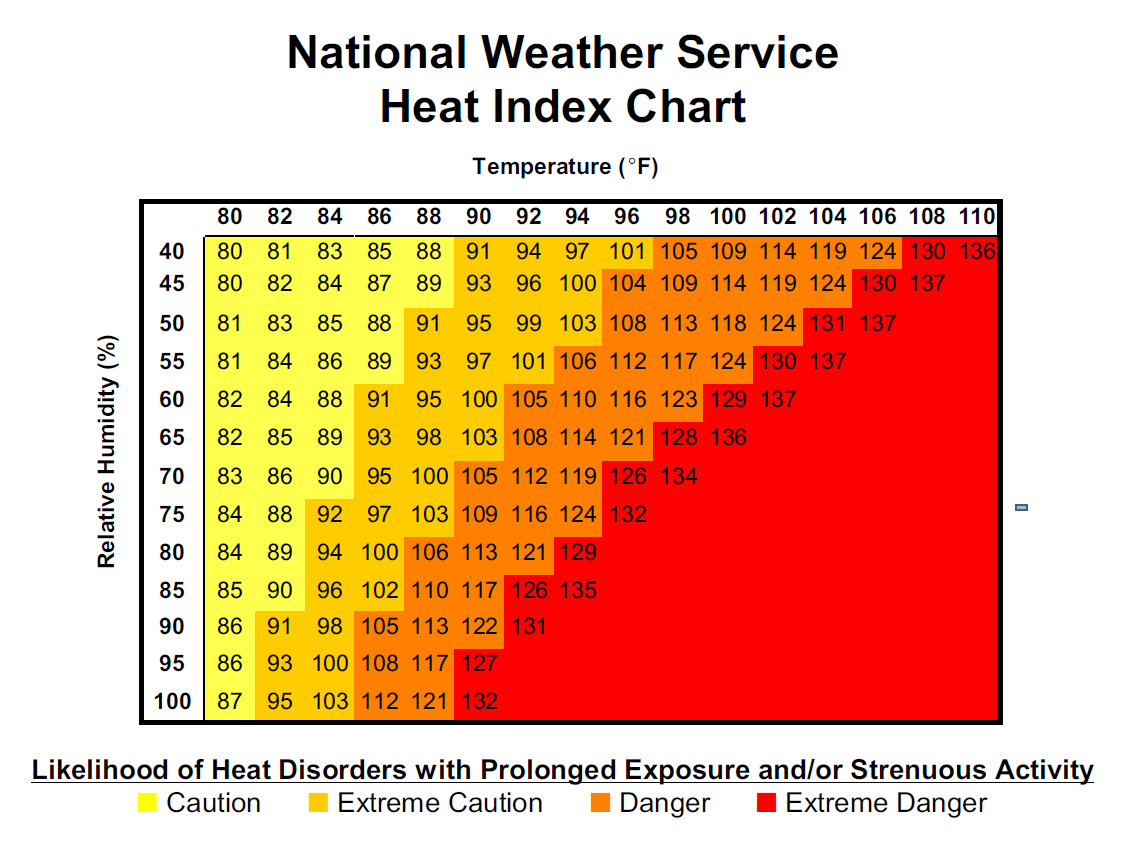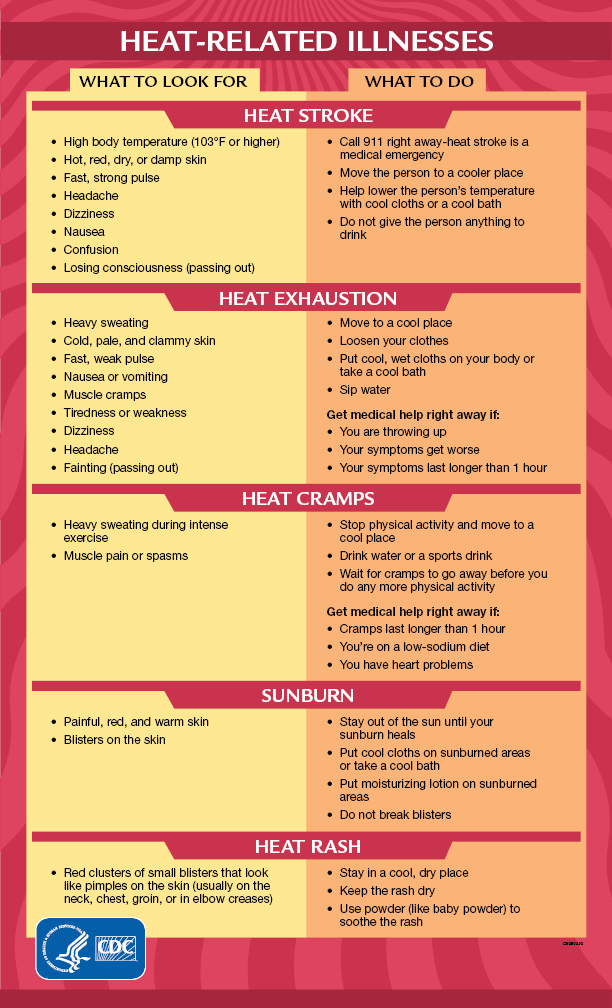Have you ever wondered how safe it is to exercise outside in high heat? What can you do to make sure that you stay safe exercising in heat?
If you’re like me, you love getting outside to exercise. Going for a swim, bike ride, run, or hike on clear blue sky days, being outside in nature with the birds and trees, can’t be beat.
But what if it’s 80, 90, or 100 degrees outside? Is exercising safe?
When you exercise in heat, your safety depends on your understanding of the risks for exertion in hot weather. It is also imperative to know what to do if you find yourself overheated.
Here are 7 important questions about exercising in heat to consider.
The answers are incredibly important to know for your safety if you exercise in heat.
-
-
- How hot is too hot?
- What happens to your body when you exercise in heat?
- What happens if you get too hot?
- What should you do if you get overheated?
- What steps should you take before you exercise in heat?
- What steps should you take while you exercise in heat?
- What steps should you take after you exercise in heat?
-
1. How hot is too hot?

I’m sure you have heard the warnings given by meteorologists on your local newscast. They usually happen around July or August and sound something like “Tomorrow is going to be a hot one out there. Heat index over 100.”
But, your coach has scheduled a run. Or you are supposed to go hiking with friends or your family. Or you are going on a bike ride that you have spent months training for. Or you just really want to be outside, being active.
What about your kids or grandkids or the sports team you coach?
Is it safe?
How hot is too hot to exercise? The National Weather Service has put together the chart below to let you know when it is indeed too hot to exercise. This chart is based on % humidity and temperature in Fahrenheit.

2. What happens to your body when you exercise in the heat?
-
-
- Your perspiration rate goes up. Your body’s first line of cooling comes from evaporation. You produce sweat, the sweat is hit by the wind which causes it to evaporate. When sweat evaporates, your body is cooled. The hotter it is, the more you need to sweat to cool yourself. The more humid it is, the more you need to sweat as well.
-
-
-
- Your heart rate goes up. When your body heats up, your cardiovascular system, your heart and lungs, need to work overtime to allow your body to cool itself. Because of this, a running, hiking, or cycling pace that you are used to will be harder and more strenuous in high heat.
-
-
-
- Your Vo2Max goes down. Vo2 Max is a measurement of how much oxygen your body can use. If your body is working hard to cool itself, you will have less oxygen left over to work. So, once again…your regular pace will be harder in high heat.
-
-
-
- Your body temp goes up. When you out in the heat, as hard as you might try, you are not going to stay cool. Over time, your body’s core temperature is going to rise.
-
3. What happens if you get too hot?
There are 5 problems that can happen when you get overheated.
-
-
- Heat Cramps
- Heat Exhaustion
- Heat Stroke
- Sunburn
- Heat Rash
-
I have included a chart from the CDC below that will give you all the symptoms of heat cramps, heat exhaustion and heat stroke as well as sunburn and heat rash. It is important to recognize the symptoms of these conditions immediately so you can take appropriate action.
The chart will also explain what to do if you or someone you’re with has these symptoms.
FOR YOUR SAFETY: SAVE THIS CHART IN YOUR PHONE OR PRINT IT OUT FOR YOUR BACKPACK

4. What should you do if you get overheated?
Heat exhaustion and heat stroke are life-threatening and require emergency treatment as soon as possible. I cannot stress this enough.
If you think you (or anyone you are with) have a heat-related illness, (if you stop sweating, feel faint, or disoriented) CALL 911 BEFORE IT IS TOO LATE!
5. What steps should you take before you exercise in heat?
-
-
- Acclimate – Research has shown that you can teach your body how to handle heat. Exercising in heat for an hour a day for 10 days gets your body used to high temperatures. Your body becomes more efficient at cooling itself. Your sweat rate will increase. Your exercise heart rate will decrease.
- Weigh yourself – The most accurate way of knowing how much fluid you lost while exercising is to weigh yourself before and after the workout. So, step on a scale and write down how much you weigh fully dressed.
- Make sure you are hydrated – If you go into a workout in heat dehydrated, you will be starting from a deficit. You need to be hydrated at all times, so start out right. Drink 8-12oz an hour for three hours before you leave.
-
- Make a hydration plan – When you are exercising in heat, you need to consume 1 liter of water (or a sports drink) per hour. So, use that formula to figure out how much you need to drink. Are you going to be able to carry that much? If so, great. If not, before you leave, figure out where you are going to stop to get more fluids. You don’t want to run out.
-
6. What steps should you take while you are exercising in heat?
-
-
- Slow down – As described above, when you exercise in heat, your body is spending a lot more energy trying to cool off. So, even if you go at a slower pace than normal, your heart rate will still be elevated.
- Wear the right clothing – You want to wear clothing that breathes and allows sweat to evaporate from your skin. This means:
-
- Loose-fitting – clothes that give the air the ability to pass-through.
- No Cotton – Cotton is very absorbent. It will hold onto your sweat and will not allow it to evaporate. Look for performance shirts made by companies like Under Armour or Nike.
- Light Colors – Light colors reflect the sun’s rays. Dark colors absorb the heat.
-
- Hydrate– As mentioned above, you should consume 1 liter of liquids per hour while exercising in heat. Should you drink water or a sports drink? If you are exercising for longer than an hour, I would suggest using a sports drink. Why? Because when you sweat, you are not just losing water. You are losing sodium and electrolytes in your sweat. Sports drinks help replace those.
- Choose shaded trails – If you have a choice on where to exercise in heat, always choose a shaded trail, path, or route. Getting out of the sun can make a world of difference in heat.
- Choose trails that will have other people on them – There is a bit of danger when you are exercising in heat and you want to be around other people in case you start to overheat. You don’t want to be on a deserted trail, without anyone around if you need help.
- Choose trails that will have cell phone service – Two of the conditions associated with heat, heat exhaustion and heat stroke, are medical emergencies. If you start to have symptoms, the faster you can get help, the better off you will be. So, stay on trails that have cell service in case you need to call 911.
- Listen to your body – Your body will let you know if it has had enough. You might feel faint. You might feel nauseous or you just might feel like something is off. You might get chilled even though you are extremely hot.
-
- 7. What steps should you take after you exercise in heat?
-
-
- Cool yourself down – You need to cool off. Go inside, into the air-conditioning. Take a cold shower or bath. Hop into a pool. Do whatever you can to cool yourself down.
-
- Weigh yourself – Take off your shirt (because it is probably holding a bit of sweat), step on the scale, and compare that number to your starting weight. How much weight did you lose?
-
- Rehydrate — Drink 1 liter of water of every 2 pounds that you lost while exercising
-
Conclusion
Follow these steps before, during, and after you exercise and you will reduce your risk of heat-related illnesses.
But, if you ever think it is too hot to exercise outside, don’t risk it. Stay home and stay safe.
One final thing. If you want to know some of my favorite gear to use in the heat, check out the blog post “Clothing, Gear, and Gadgets to Make Hiking, Backpacking, and Trekking More Fun”
If you are looking for stretches to do for hiking, check out the blog post “7 Best Stretches for Hikers“.


